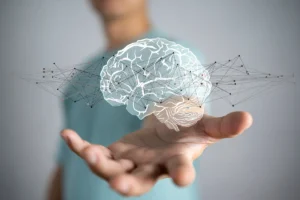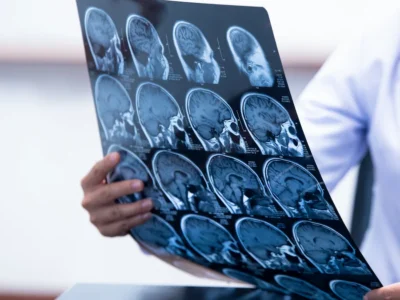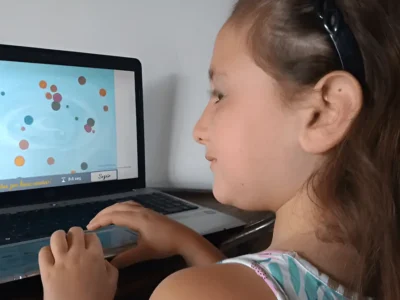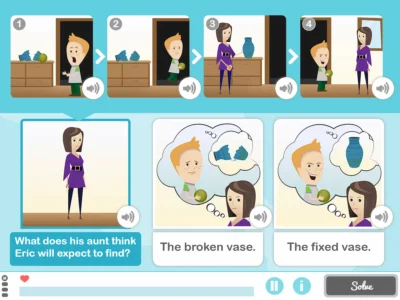Marcos Ríos-Lago explains the complexity of assessing decision making in clinical neuropsychology, analyzing its neural basis and the most commonly used instruments for its assessment.
Neuropsychological assessment and executive functions
As neuropsychologists, we must address, as part of our daily work, the assessment of attention, memory, and other cognitive processes. Among all the mechanisms, we can highlight the complexity of assessing executive functions. It is a complex construct (perhaps the union of several constructs under the same conceptual umbrella) for which we do not have a cognitive model accepted by the entire scientific community.
Current models for the study of executive functions
There are some models such as Mateer (1999), very useful clinically, or Diamond (2013), which finds a good balance between the reality of the nervous system’s functioning and the pragmatism necessary in the day-to-day of clinical neuropsychology. However, none of them, while being excellent tools, describe in detail an everyday activity such as decision making, something many would say could be encompassed within this set of executive functions.
Recent theoretical proposals
There are some theoretical proposals, such as those presented by Morelli et al. (2022) or Lebreton and Lopez-Persem (2022), showing, if anything, the tremendous complexity of the decision-making process.
What is decision making from a neuropsychological perspective?
Decision making is a function that integrates cognitive, affective and motivational processes. It is a complex function aimed at selecting an option or an action from among several alternatives and choosing the most adaptive one to achieve a goal, based on the individual’s capacities/skills, emotions, values, preferences and beliefs, and it is influenced by contextual, motivational and social factors.
This process usually ends in a choice, which may or may not be carried out. Furthermore, it applies to more concrete elements (such as choosing what to eat or which street to take), or abstract ones (such as choosing what to believe, whether to quit a job, whether to invest in bitcoin, etc.).
Types of decisions and factors involved in decision making
According to Glimcher (2013), there are perceptual decisions, value-based decisions, or general decisions.
But the elements involved are multiple, complex and their interaction is unknown to us:
- levels of abstraction or tangibility of the decision,
- impact of the decision (short- and long-term),
- automaticity in the process (vs. control),
- analysis of gains and losses,
- probability calculations,
- management of uncertainty,
- emotional elements involved,
- as well as the physical and social context.
Clinical importance of assessing decision making from neuropsychology
From a neuropsychological point of view, the study of decision making is crucial to understand how some alterations in brain functioning can affect a person’s ability to choose adaptively, which has direct implications for daily life, autonomy and quality of life.
Theoretical models useful for guiding the assessment of decision making
As always, having models that guide assessment and help us interpret findings is fundamental.
Some include the following phases (Ernst, 2005; Doya, 2008; Robinson, 2016; Heilbronner and Hayden, 2016):
- Presentation of several stimuli that predict measurable outcomes.
- Evaluation of options and formation of preferences.
- Selection of options.
- Selection of the actions and execution.
- Evaluation of the actions and results.
Moreover, we know the high cost of coldly analyzing the available information (to be fair we must acknowledge the impossibility of doing so) and from there, calculating the best possible option.
The evolutionary perspective indicates that, due to this complexity that is unmanageable with cold reasoning, we have a system that applies heuristics. In other words, we put our entire history of learning at the disposal of present decision making (Van der Pligt, 2015; Lerner et al., 2015; Damasio, 1996; Bechara et al., 1994).
Brain structures involved in decision-making processes
Despite its complexity, some structures involved in these processes are known to date, summarized in Table 1.
| Brain structure | Main function |
| Dorsolateral prefrontal cortex | Planning, reasoning, emotional regulation |
| Orbitofrontal cortex | Representation of rewards and probabilities, adaptive flexibility |
| Ventromedial cortex | Encoding of subjective value |
| Anterior cingulate | Monitoring, assessment of effort, error detection |
| Insula | Evaluation of internal states, emotional anticipation |
| Amygdala | Assessment of relevance |
| Striatum | Reward prediction, reinforcement learning |
| Parietal cortex | Probabilistic and spatial calculation of options |
Clinical alterations in decision making
Lesions to these structures, or their degeneration associated with diseases, often produce deficits in each of the elements that make up decision making. Their study from neuropsychology allows understanding the alterations associated with various neurological and psychiatric conditions.
By way of summary, some of the main characteristics that can be observed in different clinical groups are outlined (Table 2). The most frequent errors lead individuals to give maladaptive responses, different from those observed in the healthy population.
| Disorder | Alteration in decision making |
| TBI | Impulsivity, disinhibition, increased risk-taking |
| Frontotemporal dementia | Social dysregulation, apathy, rigid choices |
| Alzheimer’s disease | Loss of judgment, poor assessment of consequences |
| ADHD | Hasty decisions, low inhibitory control |
| Bipolar disorder | Risky behaviors in mania, indecision in depression |
| Schizophrenia | Deficits in motivation, value attribution and learning from feedback |
| Depression and anxiety | Negative bias, avoidance, overestimation of risk, rumination and indecision, deficits in seeking reinforcement, alterations in cost valuation |
| Apathy | Absence of preference among options, diluted valuation of options, lack of execution |
| Addictions | Overvaluation of immediate reinforcement |
Instruments available for the assessment of decision making
Regarding the instruments available for its assessment, there is no single method accepted by the entire scientific community. Nor are there clinical guidelines for the proper recording of this process and the existing criteria are variable and have little consensus.
In any case, it is necessary to incorporate some ethical elements (which further complicate the assessment task), such as seeking a balance between respecting the individual’s freedom and their safety, being qualified to assess decision making, and being able to appropriately select, apply and interpret the tools and the results obtained.
Assessment, as in most cases in neuropsychology, must be able to answer a specific question. This may be aimed at establishing a diagnosis, detecting a difficulty for possible compensation, designing a rehabilitation plan or, even, answering a specific question in a forensic context (parental capacity, management of one’s own finances, responsibility for the commission of a crime, testamentary capacity, etc.).
Let’s look at some examples:
- Differential diagnosis: some disorders present specific profiles of alteration in decision making (for example, pathological gambling, frontotemporal dementia, ADHD or schizophrenia).
- Assessment of functional autonomy: especially relevant in older adults, people with cognitive impairment or brain injury, since inappropriate decisions can affect their ability to manage finances, sign legal documents or live independently.
- Intervention planning: an accurate assessment allows designing rehabilitation or support strategies that improve choice capacity or compensate for deficits.
According to Freedman, Stuss and Gordon (1991), assessment of the cognitive processes underlying the capacity to make competent decisions is necessary, with emphasis on identifying preserved functions that can be used to compensate for existing deficits.
Thus, the performance of attention, language, memory and executive functions must be assessed. The patient must have adequate attention to participate in the assessment of specific cognitive functions. It must be evaluated whether the patient is able to understand relevant instructions, retain information long enough to evaluate it in relation to recent and past experiences, and express their wishes.
Next, it should be determined whether the patient has sufficiently intact judgment capacity and an adequate level of awareness of their performance and difficulties. Clinicians should also know which executive elements may influence the decision-making process.
For example, inhibition of impulsive responses, the ability to plan and sequence actions, flexibility to adapt to new contingencies, and the capacity to monitor performance, detect and correct errors. The examiner must decide whether the patient’s preserved cognitive abilities are sufficient to allow them to make an appropriate decision in relation to the specific question posed.
If significant cognitive impairment is detected, the examiner must conduct a detailed assessment of compensatory abilities that may help overcome deficits. To this initial neuropsychological assessment should be added tests that allow specific components of decision making to be evaluated.
For this purpose some specific tasks are available listed in Table 3.
| Test | Specific assessment |
| Iowa Gambling Task | Decision under uncertainty and emotional learning |
| Cambridge Gambling Task | Known risk and risk aversion |
| Game of Dice Task | Explicit risk and planning |
| Balloon Analogue Risk Task | Impulsivity and risk propensity |
| Delay Discounting Task | Preference for immediate rewards |
| Columbia Card Task | Emotional regulation and sensitivity to loss/reward |
| Probabilistic Reversal Task | Cognitive flexibility, sensitivity to contingency changes |
| Moral dilemmas (e.g., the trolley problem) | Ethical and emotional reasoning |
Conclusions
Decision making is not a purely logical and cold process, nor exclusively emotional. It is the result of a dynamic interaction between multiple cognitive variables, emotions, context and prior experience.
Through clinical methods, standardized tests and observation, the neuropsychologist can identify alterations in this capacity, contributing to diagnosis, therapeutic planning and informed ethical and legal decision making.
Understanding these processes in depth and assessing their alterations with appropriate tools will allow adequately answering the questions for which the assessment was designed and, if necessary, planning the most effective clinical interventions.
Although methodological limitations still exist, advances in neuroscientific models and tools with greater ecological validity continue to enrich this field, which is located at the intersection between cognition, emotion and social behavior.
It seems that in the near future we will have hybrid models that combine traditional assessments with advanced technologies and, as seems to be becoming a norm in neuropsychology, the use of artificial intelligence and algorithmic prediction of performance.

Subscribe
to our
Newsletter
Bibliography
- Bechara, A., Damasio, H., & Damasio, A. R. (2000). Emotion, decision making and the orbitofrontal cortex. Cerebral Cortex. 10(3), 295-307.
- Damasio, A. R. (1994). Descartes’ Error: Emotion, Reason, and the Human Brain. Putnam.
- Damasio, A. R. (1996). The somatic marker hypothesis and the possible functions of the prefrontal cortex. Philosophical Transactions of the Royal Society B.
- Diamond, A. (2013). Executive functions. Annual Review of Psychology, 64, 135–168. https://doi.org/10.1146/annurev-psych-113011-143750
- Doya, K. (2008). Modulators of decision making. Nature Neuroscience, 11(4), 410–416. https://doi.org/10.1038/nn2077
- Ernst, M., & Paulus, M. P. (2005). Neurobiology of decision making: A selective review from a neurocognitive perspective. Biological Psychiatry, 58(8), 597–604. https://doi.org/10.1016/j.biopsych.2005.06.004
- Freedman, M., Stuss, D. T., & Gordon, M. (1991). Assessment of competency: The role of neurobehavioral deficits. Annals of Internal Medicine, 115(3), 203–209. https://doi.org/10.7326/0003-4819-115-3-203
- Glimcher, P. W. (2013). Neuroeconomics: Decision making and the brain. Academic Press.
- Heilbronner, S. R., & Hayden, B. Y. (2016). Dorsal anterior cingulate cortex: A bottom-up view. Annual Review of Neuroscience, 39, 149–170. https://doi.org/10.1146/annurev-neuro-070815-013952
- Kahneman, D. (2003). A perspective on judgment and choice: mapping bounded rationality. American Psychologist.
- Kahneman, D., & Tversky, A. (1979). Prospect theory: An analysis of decision under risk. Econometrica.
- Lebreton, M., & Lopez-Persem, A. (2022). Anatomy and disorders of decision-making. In Reference Module in Neuroscience and Biobehavioral Psychology. Elsevier. https://doi.org/10.1016/B978-0-12-809324-5.23889-1
- Lerner, J. S., Li, Y., Valdesolo, P., & Kassam, K. S. (2015). Emotion and decision making. Annual Review of Psychology, 66, 799–823. https://doi.org/10.1146/annurev-psych-010213-115043
- Manes, F., Sahakian, B., Clark, L., et al. (2002). Decision-making processes following damage to the prefrontal cortex. Brain, 125(3), 624-639.
- Mateer C. A. (1999). Executive function disorders: rehabilitation challenges and strategies. Seminars in clinical neuropsychiatry, 4(1), 50–59. https://doi.org/10.1053/SCNP00400050
- Morelli, S. A., Sacchet, M. D., & Zaki, J. (2022). Common and distinct neural correlates of personal and vicarious reward: A quantitative meta-analysis. NeuroImage, 191, 42–53. https://doi.org/10.1016/j.neuroimage.2019.02.024
- Robinson, H. W. (2016). Decision making by the book: How to choose wisely in an age of options. Discovery House.
- Rolls, E. T. (2019). The Brain, Emotion, and Decision-Making. Oxford University Press.
- Van der Pligt, J. (2015). Attitudes and decisions. In J. R. Eiser & J. Van der Pligt, Attitudes and Decisions (pp. 1–20). Psychology Press.
- Verdejo-García, A., & Bechara, A. (2009). A somatic marker theory of addiction. Neuropharmacology, 56, 48–62.
If you enjoyed this blog post on the assessment of decision making in neuropsychology, you will likely be interested in these NeuronUP articles:
“This article has been translated. Link to the original article in Spanish:”
La evaluación de la toma de decisiones en neuropsicología







 Spatial Visualization Game for Kids: Entangled ropes
Spatial Visualization Game for Kids: Entangled ropes
Leave a Reply